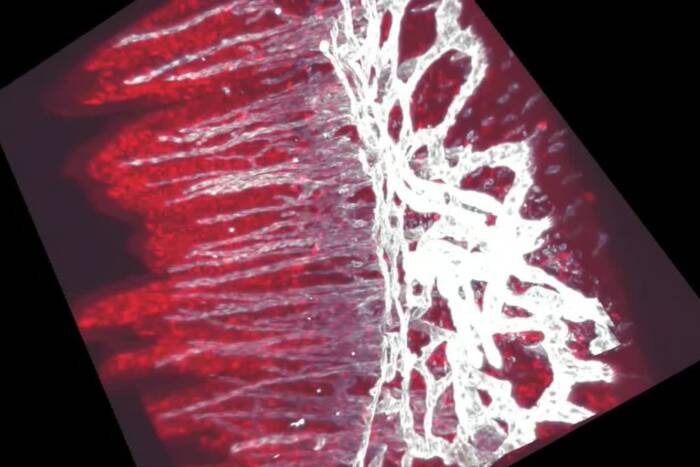Michael W. Young to receive 2011 Horwitz Prize for studies on molecular basis of circadian rhythms
Michael W. Young, head of the Laboratory of Genetics at Rockefeller University, will receive the 2011 Louisa Gross Horwitz Prize from Columbia University. He shares the prize with Jeffrey C. Hall and Michael Rosbash for their work on the molecular basis of circadian rhythms, the first demonstration of a molecular mechanism for behavior.
“Mike Young’s research on the molecular mechanisms governing circadian rhythms has shed important light on sleep and sleep disorders,” says Marc Tessier-Lavigne, president of The Rockefeller University. “His work, which began in fruit flies and has applications for humans, underscores the importance of basic research in improving human health.”
Molecular cloning of the gene named period (per), which is needed to maintain circadian rhythm in the brain of the fruit fly Drosophila, was achieved independently and nearly simultaneously by Hall and Rosbash, working together at Brandeis University, and by Young at Rockefeller, in 1984. That pivotal discovery led to subsequent studies from all three labs that eventually unmasked the general molecular mechanism for circadian clocks: a transcriptional feedback loop that oscillates during the 24-hour cycle. The Hall-Rosbash-Young mechanism of the molecular clock was later found to be universal in the biological world.
In the 1990s, Young identified per’s partner gene, timeless (tim), and showed that protein products of these two genes accumulate, pair up in the cell’s cytoplasm and then migrate into the nucleus where their presence switches off their production by shutting down the per and tim genes. These events are timed within the cell, as the PER and TIM proteins are retained in the cytoplasm for a fixed interval lasting several hours. This delay promotes RNA and protein rhythms and determines the period of the clock. Another of his laboratory’s discoveries is that the enzyme casein kinase 1 regulates the pace of this 24-hour molecular clock by restricting the longevity of the PER protein in this process.
The research has direct implications for the understanding of human disorders. Several hereditary sleep disorders, for example, map to human homologs of the fly genes coding for PER and casein kinase 1, indicating that faulty interactions between the two proteins are responsible for altered patterns of sleep. The findings provide a basis for the development of possible treatments for such disorders.
“I’m very grateful to be recognized in this way, and I am especially pleased to share the Horwitz Prize with my colleagues Jeff Hall and Michael Rosbash,” says Young. “The three of us set out on this project when not a thing was known about circadian clocks at the molecular level, and our efforts have been tightly interconnected for nearly 30 years. I also want to acknowledge those who over many decades have worked collectively to make Drosophila such an effective model organism for studies of this sort. I believe there is no alternative path that could have been taken to reveal how such clocks work in animal cells.”
Young received his undergraduate degree in biology in 1971 and his Ph.D. in genetics in 1975, both from The University of Texas, Austin. Following postdoctoral work in biochemistry at the Stanford University School of Medicine, he was appointed assistant professor at Rockefeller in 1978 as part of The Rockefeller University Fellows Program. He was named associate professor in 1984 and professor in 1988, and in 1991 he was appointed head of the Rockefeller unit for the National Science Foundation’s Science and Technology Center for Biological Timing. He was named the university’s vice president for academic affairs and Richard and Jeanne Fisher Professor in 2004.
Young was an investigator at the Howard Hughes Medical Institute from 1987 to 1996. He is a fellow of the American Academy of Microbiology and a member of the National Academy of Sciences. He shared the 2009 Peter and Patricia Gruber Foundation Neuroscience Prize with Hall and Rosbash for their discoveries of molecular mechanisms that control circadian rhythms.


